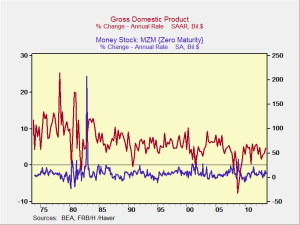Yesterday, we talked about how the money supply has not expanded unduly, given the level of economic growth. We also looked at credit growth and found that it too was running at or below the levels expected, considering the level of economic growth. There appears to be no sign of the Federal Reserve’s stimulus in these measures.
Does that mean we’re off the hook on inflation? The short answer is no, and the reason is interesting. First, though, a bit of background.






